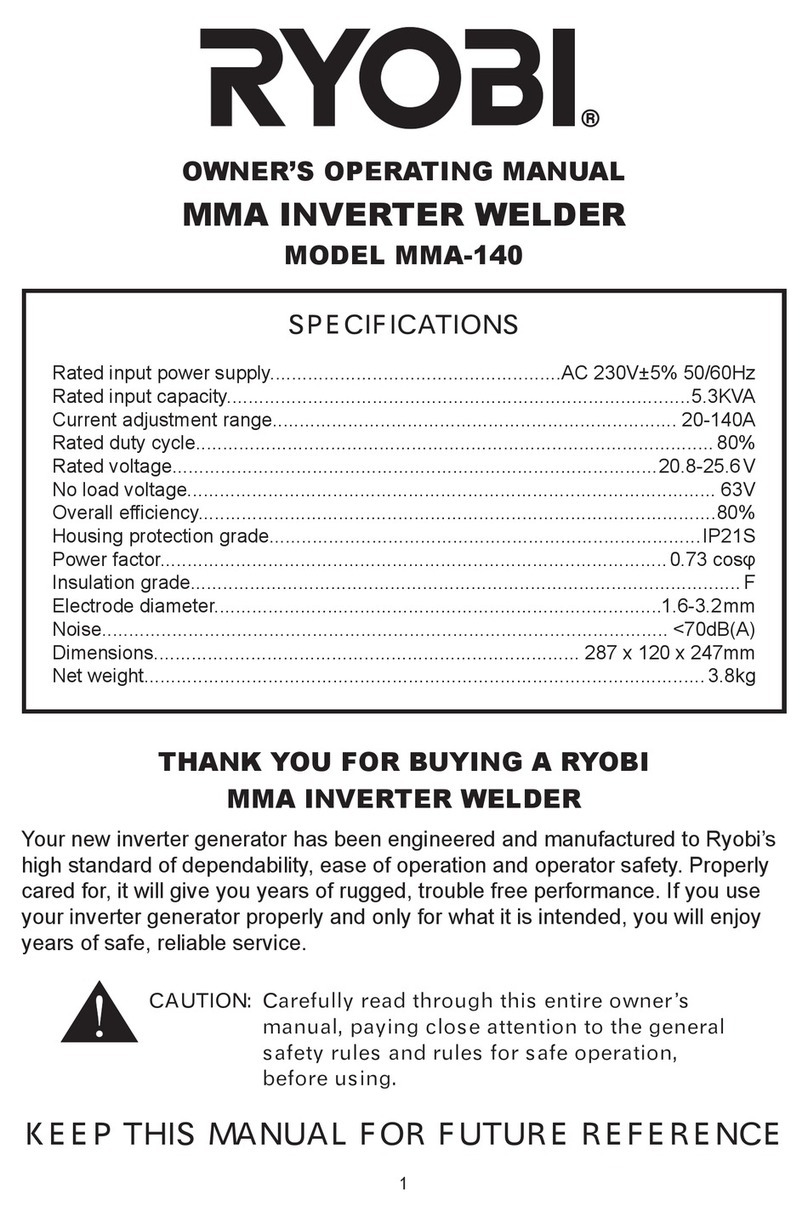
2
IMPORTANT SAFETY INSTRUCTIONS
The purpose of safety rules is to attract your
attention to possible dangers. The safety symbols
and the explanations with them, require your
careful attention and understanding. The safety
warnings do not by themselves eliminate any
danger. The instruction or warnings they give are
not substitutes for proper accident prevention
measures.
SAFETY ALERT SYMBOL. Indicates
danger, caution or warning. May be used
in conjunction with other symbols or
pictures.
Failure to obey a safety warning can result in
serious injury to yourself or to others. Always follow
the safety precautions to reduce the risk of fire,
electric shock and personal injury.
Do not attempt to operate this tool until you have
read thoroughly and completely understood the
safety rules, etc. contained in this manual. Failure
to comply can result in accidents involving fire,
electric shock or serious personal injury. Save this
Owners Operating Manual and review it frequently
for continual safe operation and for instructing
others who may use this tool.
EMF INFORMATION
Considerations About Welding And The Effects Of
Low Frequency Electric And Magnetic Fields.
Welding current, as it flows through welding cables,
will cause electro- magnetic fields. There has been
and still is some concern about such fields.
owever, after examining more than 500 studies
spanning 17 years of research, a special blue
ribbon committee of the National Research Council
concluded that: “The body of evidence, in the
committee’s judgment, has not demonstrated that
exposure to power- frequency electric and
magnetic fields is a human-health hazard.”
owever, studies are still going forth and evidence
continues to be examined. Until the final
conclusions of the research are reached, you may
wish to minimize your exposure to electromagnetic
fields when welding or cutting.
To reduce magnetic fields in the workplace, use the
following procedures:
1. Keep cables close together by twisting or
taping them.
2. Arrange cables to one side and away from
the operator.
3. Do not coil or drape cables around your body.
4. Keep welding power source and cables as far
away from operator as practical.
5. Connect work clamp to work piece as close
to the weld as possible.
ABOUT PACEMAKERS
Pacemaker wearers consult your doctor first. If
cleared by your doctor, then following the above
procedures is recommended.
WELDING HAZARDS
The symbols shown below are used throughout this
manual to call attention to and identify possible
hazards. When you see the symbol, watch out, and
follow the related instructions to avoid the hazard.
Only qualified persons should service, test,
maintain, and repair this unit.
During servicing, keep everybody, especially
children, away.
ARC RAYS can burn eyes and skin; NOISE can
damage hearing. Arc rays from the welding
process produce intense heat and strong
ultraviolet rays that can burn eyes and skin.
Noise from some processes can damage
hearing.
1. Wear a welding helmet fitted with a proper
shade of filter (ANSI Z49.1) to protect your
face and eyes when welding or watching.
2. Wear approved safety glasses. Side shields
recommended. Never wear contact lenses
while welding.
3. Use protective screens or barriers to protect
others from flash and glare; warn others not
to watch the arc.
4. Wear protective clothing made from durable,
flame-resistant material (wool and leather)
and foot protection.
5. Use approved ear plugs or ear muffs if noise
level is high.
ARC RAYS
Can Burn




























